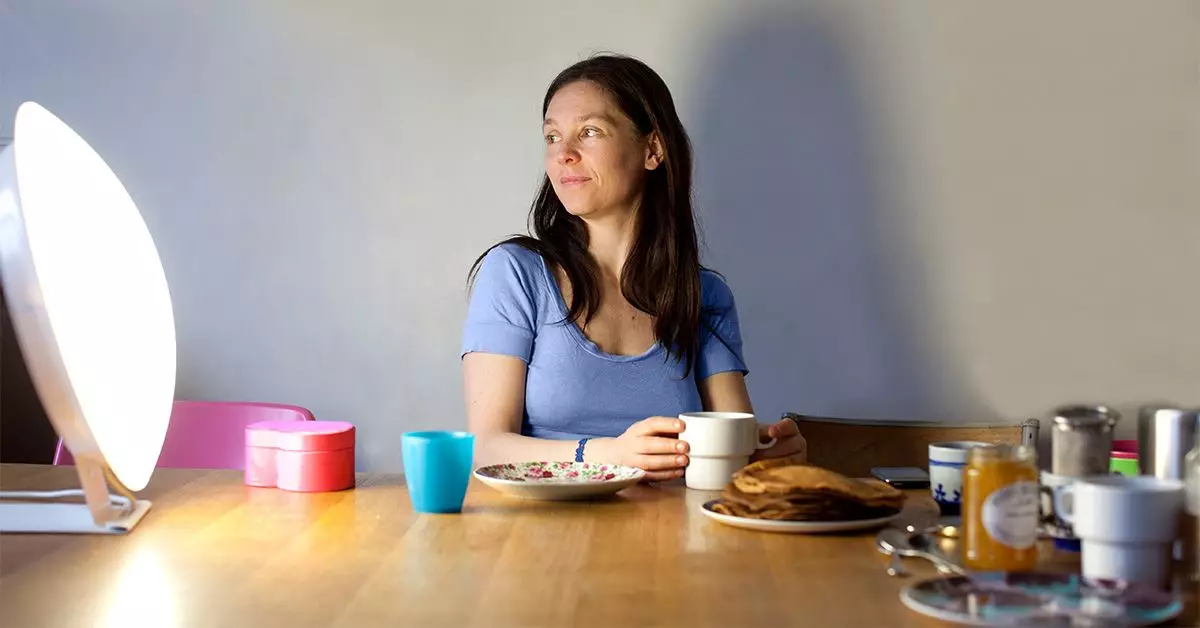As the days grow shorter and winter takes hold, many individuals find themselves grappling with a condition known as seasonal depression, clinically referred to as major depressive disorder with a seasonal pattern. More commonly recognized by the acronym SAD, or Seasonal Affective Disorder, this affliction can turn the joy of winter into a struggle for those who experience it. For some, the mundane absence of sunlight during these colder months can lead to debilitating symptoms, ranging from low energy and irritability to profound sadness. While the phenomenon is most commonly associated with winter months, ironically, some individuals also encounter depressive symptoms even during the summer, demonstrating the complex nature of this mood disorder.
The Role of Phototherapy
A beacon of hope for many suffering from this condition is phototherapy, or light therapy. This therapeutic approach centers around the use of specialized light boxes that simulate sunlight and offer a compelling alternative for those seeking relief without the side effects often associated with traditional antidepressant medications. Typically, the therapy involves sitting before a light box for a prescribed duration each day, usually starting in the fall months and continuing well into spring. It’s an enticing prospect: a simple, time-bound commitment to combat the dreariness of winter’s grasp.
Studies underline that this treatment capitalizes on regulating circadian rhythms—our body’s internal clock—with the aim of ameliorating symptoms linked to seasonal depression. Disturbingly high melatonin levels, which foster a sense of fatigue and disrupt sleep, are reduced, while serotonin levels—pivotal in managing mood—are enhanced. This regulation is not merely anecdotal; it’s backed by research, highlighting the medical community’s increasing confidence in light therapy as a first-line treatment for winter-pattern seasonal depression.
The Mechanics of Light Therapy
An effective light therapy session requires careful attention to several factors. The light box must emit a brightness of at least 10,000 lux, significantly brighter than a typical home lamp. Furthermore, it should feature a screen large enough to envelop the user’s field of vision adequately and be equipped with UV filters to protect the eyes. Users are advised to maintain a slight peripheral gaze to avoid direct exposure while engaging in other activities, such as reading or working.
As appealing as this format may sound, important considerations must be made regarding the initiation and maintenance of treatment. Many healthcare professionals recommend engaging in light therapy for at least 30 minutes each morning. This early exposure is crucial since it aligns with the body’s natural rhythm, preparing individuals to face the day ahead with increased vigor.
Expert Perspectives and Approaches
Notably, the NHS and a plethora of other health sources recognize light therapy not just as a singular solution, but as a versatile component that can complement other treatments. A 2019 review noted that individuals could effectively combine light therapy with other therapeutic modalities, including prescribed medication. This holistic perspective acknowledges the multifaceted nature of mood disorders and emphasizes that light therapy is not a one-size-fits-all solution—it should cater to individual needs and circumstances.
For those hesitant about medications—pregnant women or older adults, for example—light therapy might present a preferable alternative. However, candidates for light therapy must approach their physician before embarking on this treatment, particularly if they have preexisting conditions such as certain eye disorders or photosensitivity, which may complicate their response to the therapy.
Limitations and Individualized Care
Despite its rising popularity, phototherapy isn’t devoid of potential side effects. Users might experience headaches or eyestrain, particularly as their bodies adjust to the influx of light. These initial discomforts are often transient but warrant open communication with healthcare providers. Should symptoms persist, varying exposure times or distance from the light box can enhance comfort levels.
Moreover, financial barriers can impact access to this treatment. Light boxes often come with a hefty price tag, and insurance coverage may be a hurdle—for many, purchasing a light box without adequate reimbursement can limit treatment options. This inherently raises questions about equal access to care, an issue that healthcare advocates should prioritize.
The growing body of evidence supporting the effectiveness of light therapy paints a promising picture for those wrestling with seasonal depression. Its blend of simplicity, minimal side effects, and potential for profound impact underscores its value as an innovative approach to mental health care. With continued research and dialogue, light therapy can illuminate a pathway toward better mental well-being during the darkest days of winter.


Leave a Reply